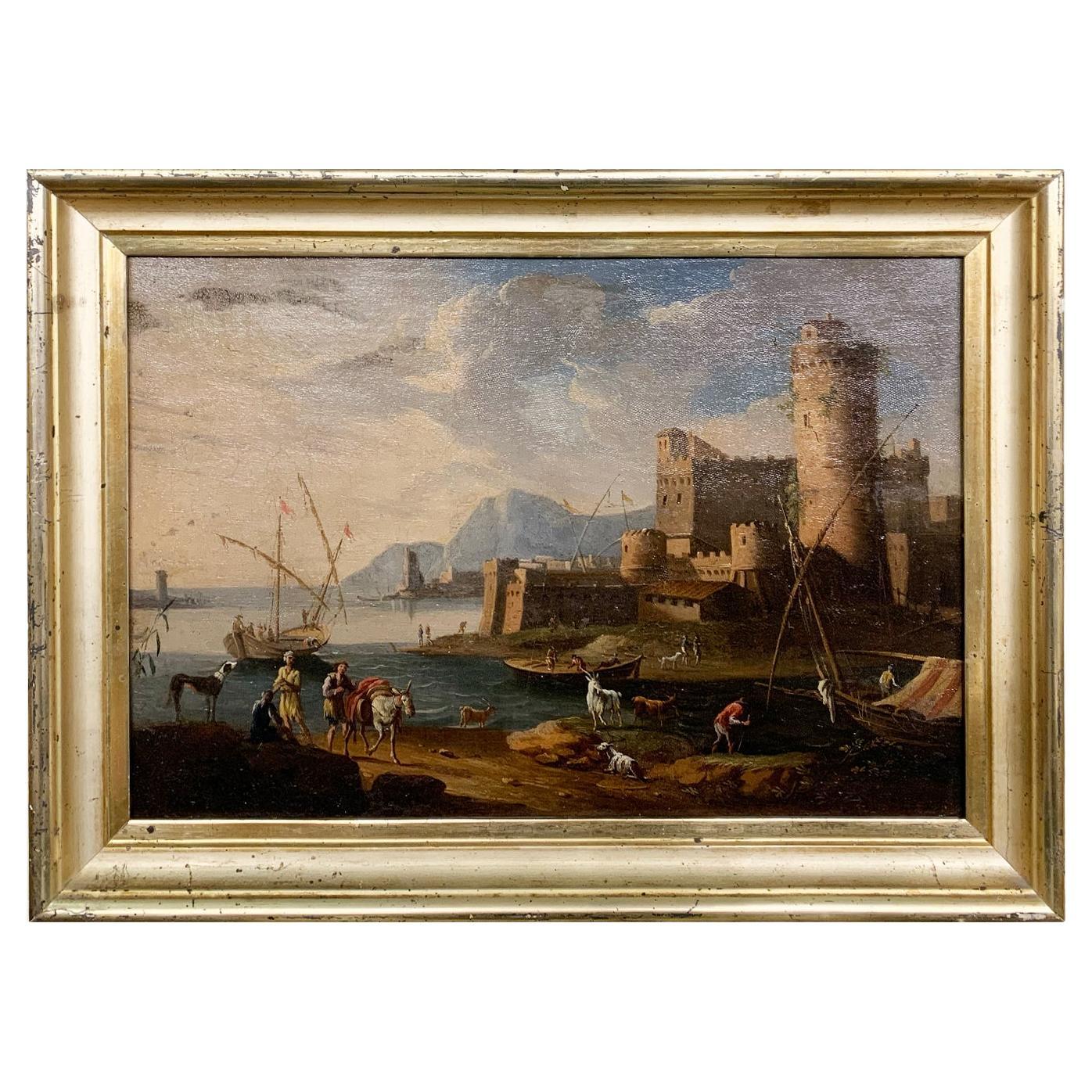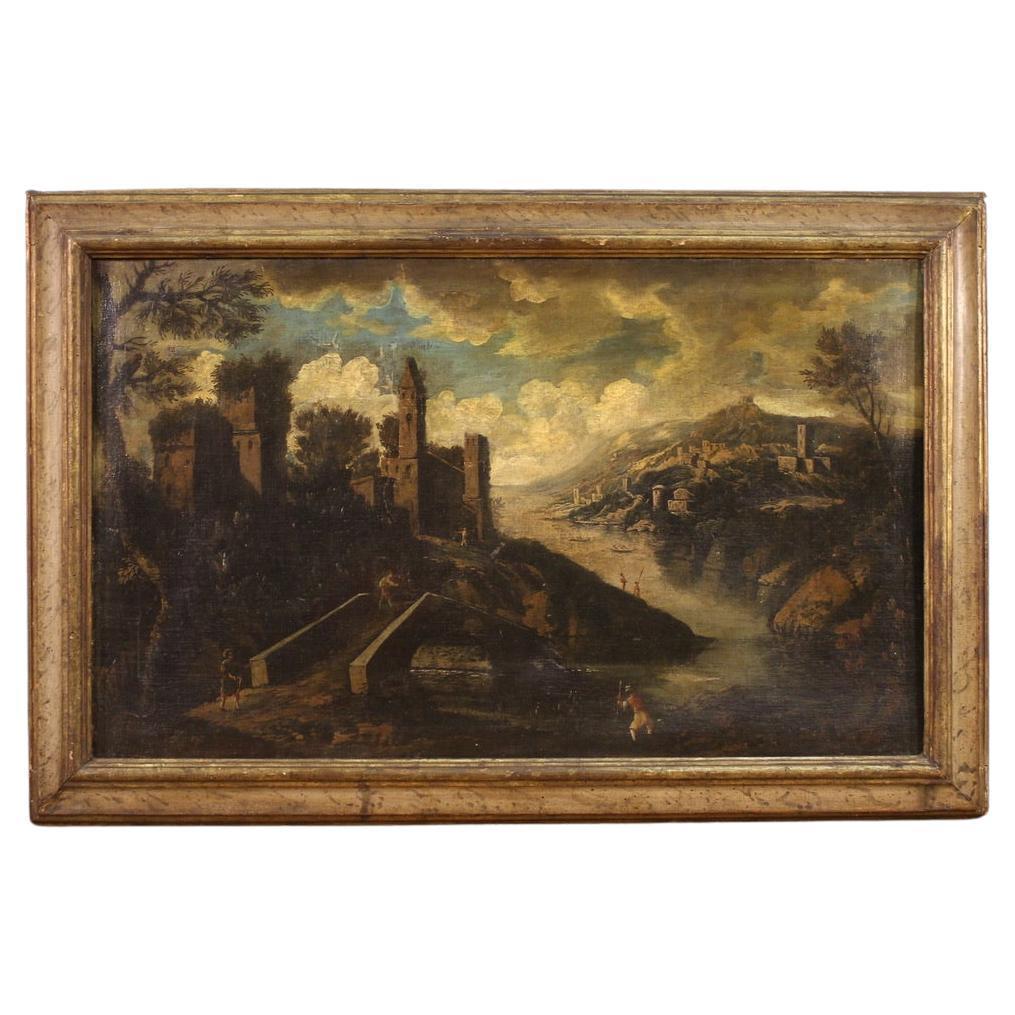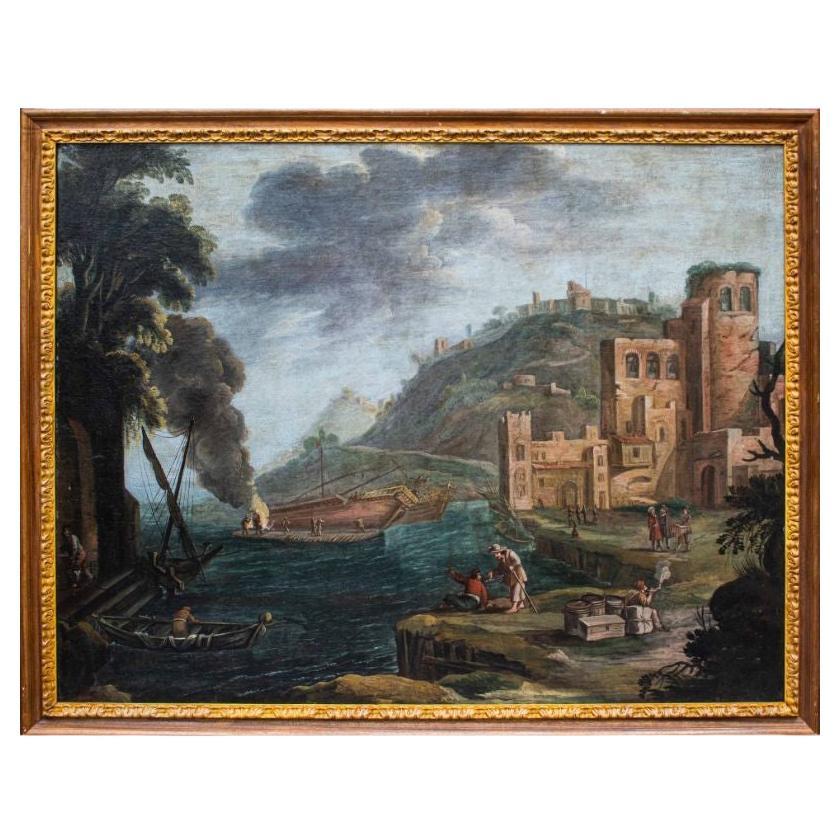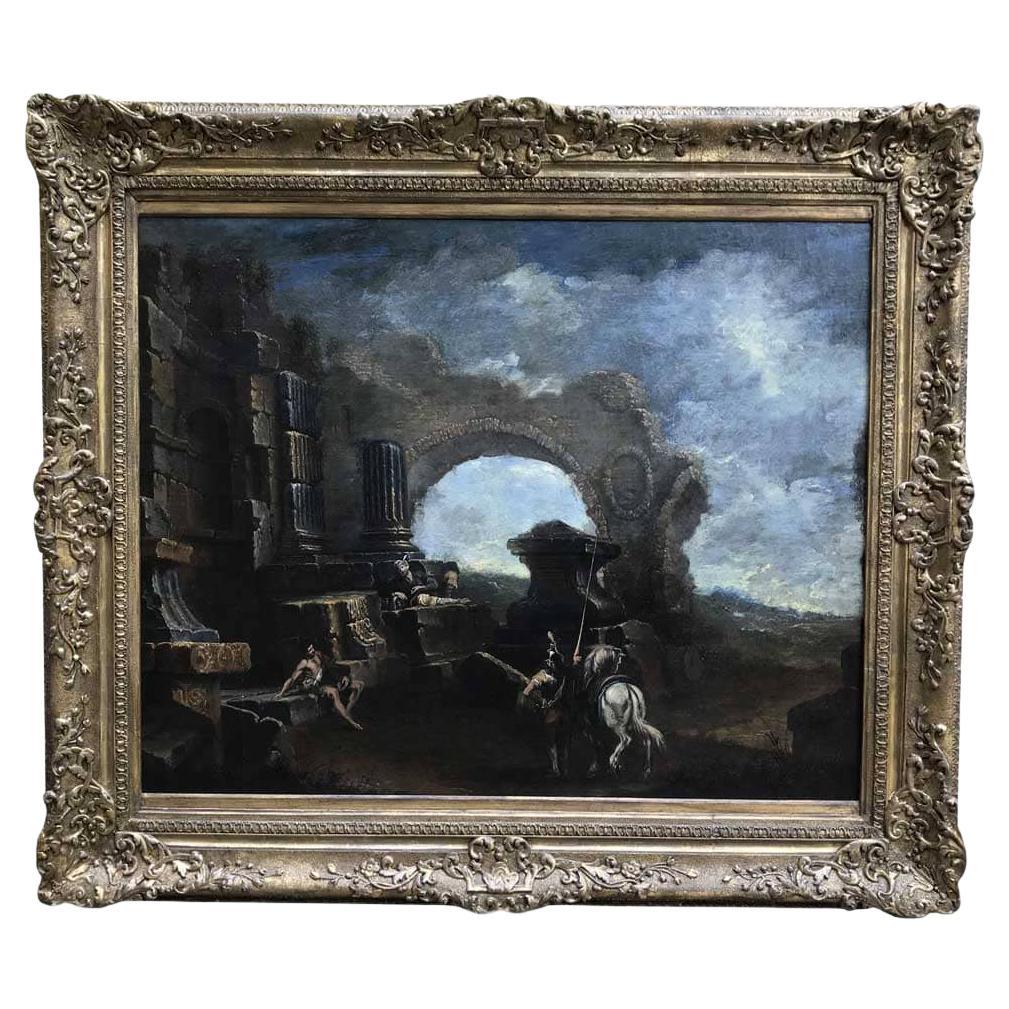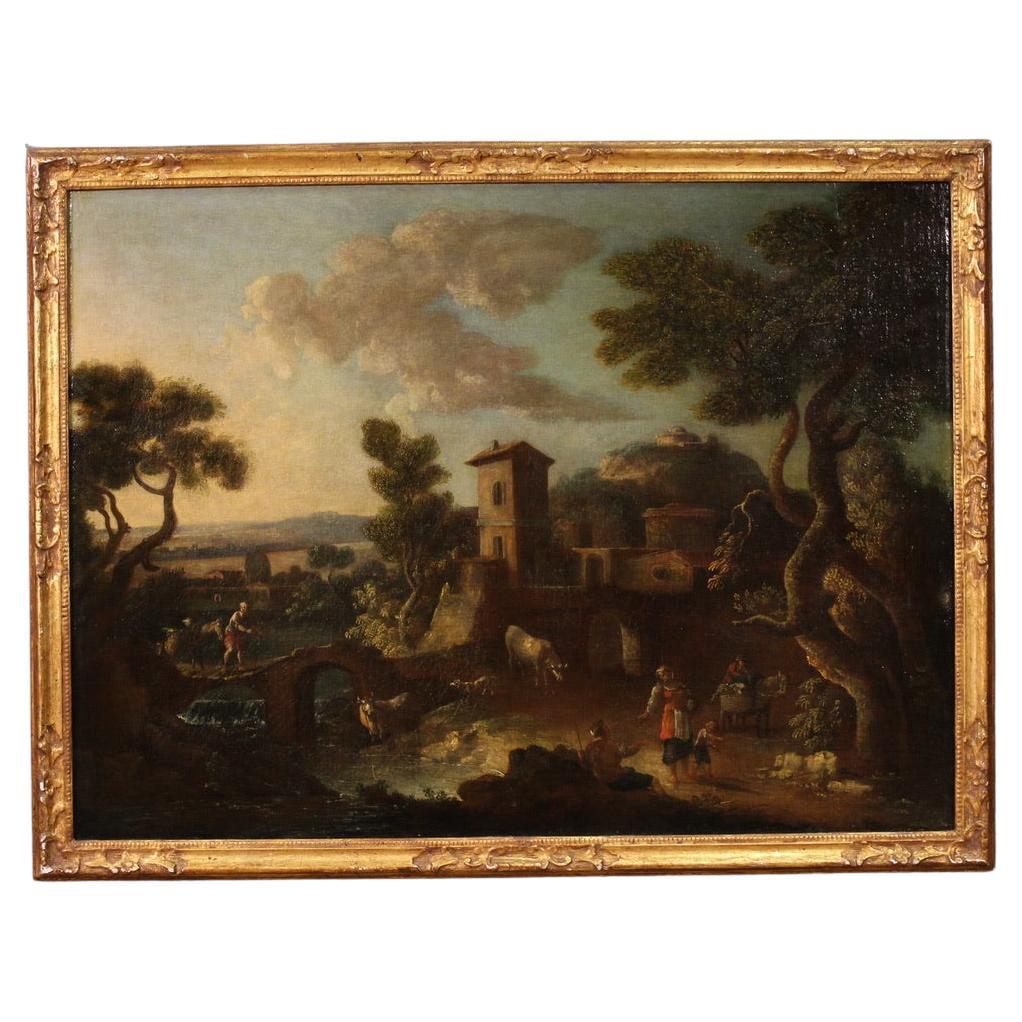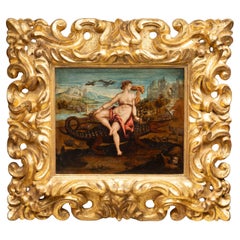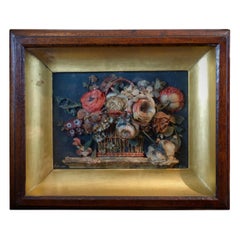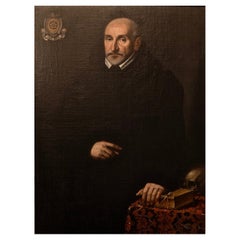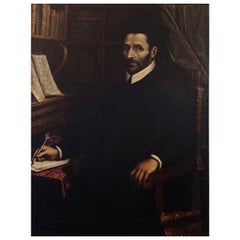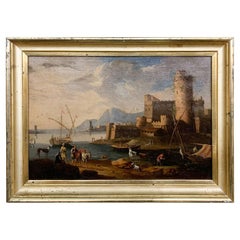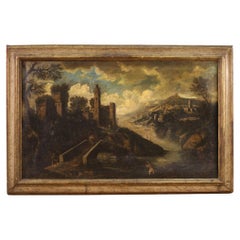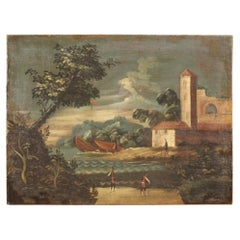Items Similar to Antonio Travi Called Le Sestri, Seascape with Ruins, Genoa 17th Century
Want more images or videos?
Request additional images or videos from the seller
1 of 7
Antonio Travi Called Le Sestri, Seascape with Ruins, Genoa 17th Century
$21,259.01
£16,004.78
€18,000
CA$29,285.68
A$32,798.12
CHF 17,113.52
MX$400,614.90
NOK 217,733.78
SEK 205,240.18
DKK 137,018.44
About the Item
Antonio Travi called Le Sestri (Sestri Ponente, 1608 - Genova 1665)
Seascape with ruins
Genova, First half of 17th century
Oil on canvas with his original 17th century frame
Measures: 170 x 200 cm
This painting has been studied by Professor Ugo Ruggeri who proposed the attribution to Antonio Travi. The expertise is available for the potential buyer.
Antonio Travi is the first true painter of the Ligurian coastal landscape.
While still in his teens, around 1625, Travi spent time in the workshop of Bernardo Strozzi (1581/1582-1644), as one can see from his long, richly-loaded brushwork technique.
Very soon thereafter, Le Sestri created his own language, which included backgrounds with ruined buildings and narrative scenes with colorful small-scale figures. Travi’s animated scenes follow the narrative tradition of Filippo Napoletano (circa 1590-1629) or those of his contemporary Salvatore Rosa (1615-1673). Genoa and the Ligurian coastline provided abundant material for maritime subjects, and the artist filled his foregrounds with fishing scenes, small boats and towing.
Antonio Travi offers us an original blending of Genoese and Northern European traditions, and in particular a response to the art of Goffredo Wals (1595?-1638?), whose presence in Genoa is recorded from November 1623 onwards, and whose treatment of cool, precise light is shared by our artist.
This large canvas depicting a seascape with ruins presumably decorated an aristocratic Genoese palace, as suggest by the monumental dimensions of the canvas accompanied by its original frame.
This beautiful landscape with architectural ruins, fully reflects the pictorial poetics of Antonio Travi that remains constant throughout his career: the highly realistic description in this painting, with its shoreline covered in bright shingle and a crystalline light that precisely defines the reliefs and ruins in the background, lends the whole composition a modern tonality.
Looking at the style characters, we see the proof of the brush stroke and the love for the typical color of the master Strozzi, but also a clarity and precision typical of the Flemings active in Genoa, with a reference particular to the German Goffredo Wals, present in several collections of the Genoese aristocracy.
The luminous and metaphysical scenes of Wals are translated into Travi's painting with a ruinist taste in Ligurian key, through rapid brush strokes, a dense color and a fantastic naturalism accentuated by a silvery luminosity.
From the proposed canvas, we can deduce typical elements of his palette, such as precise chromatic chords and the studied insertion of lighter shades on the basic tones of the lands and whites.
His works are always animated by little figures who carry out their daily activities with simplicity: they bring their flock to drink or to graze on the banks of the river. However, it must be emphasized that the presence of the man does not seems never to be decisive, but that the true protagonist of his works is a nature that reveals itself in all its simplicity. This painting makes it explicit: almost a manifesto of its poetic vein, where ruin is the real queen of the stage.
The link with other autograph works by the artist is evident, notably the "seascape with ruins" from the Zerbone collection in Genoa or the "Rebecca at the well" still preserved in a private Genoese collection.
Bibliography :
• Genova nell’età Barocca, catalogo della mostra, a cura di E. Gavazza e G. Rotondi Terminiello, Genova Galleria Nazionale di Palazzo Spinola 1992, N. 167-168
• E. Gavazza, F. Lamera, L. Magnani, La pittura in Liguria. Il secondo Seicento, Genova 1990, n. 52-54
• Pietro Torriti , "La natura morta e il paesaggio", dans La Pittura a Genova e in Liguria dal Seicento al primo Novecento, Gênes, 1987
• Gianluca Zanelli, Antonio Travi e la pittura di paesaggio a Genova nel'600, Gênes, 2001.
- Dimensions:Height: 67.33 in (171 cm)Width: 78.75 in (200 cm)Depth: 3.94 in (10 cm)
- Style:Baroque (Of the Period)
- Materials and Techniques:
- Place of Origin:
- Period:
- Date of Manufacture:17th Century
- Condition:Wear consistent with age and use.
- Seller Location:Bruxelles, BE
- Reference Number:1stDibs: LU6666233677842
About the Seller
5.0
Vetted Professional Seller
Every seller passes strict standards for authenticity and reliability
1stDibs seller since 2022
15 sales on 1stDibs
Typical response time: 2 hours
- ShippingRetrieving quote...Shipping from: Bruxelles, Belgium
- Return Policy
Authenticity Guarantee
In the unlikely event there’s an issue with an item’s authenticity, contact us within 1 year for a full refund. DetailsMoney-Back Guarantee
If your item is not as described, is damaged in transit, or does not arrive, contact us within 7 days for a full refund. Details24-Hour Cancellation
You have a 24-hour grace period in which to reconsider your purchase, with no questions asked.Vetted Professional Sellers
Our world-class sellers must adhere to strict standards for service and quality, maintaining the integrity of our listings.Price-Match Guarantee
If you find that a seller listed the same item for a lower price elsewhere, we’ll match it.Trusted Global Delivery
Our best-in-class carrier network provides specialized shipping options worldwide, including custom delivery.More From This Seller
View AllAllegory of Africa - 16th century
Located in Bruxelles, BE
Flemish school of the 16th century
Allegory of Africa
After The Allegories of the Continents by Maerten de Vos (engraving by Adriaen Collaert)
Oil on copper
Inscription: "Giulio Ro...
Category
Antique 16th Century Belgian Renaissance Paintings
Materials
Copper
Wax Relief, Italy 19th Century
Located in Bruxelles, BE
Wax relief depicting a vase with flowers
Italy, mid-19th century
Signed "Scot. inv et fecit"
Measures: 37 x 44 x 7,5 cm.
Category
Antique Mid-19th Century Italian Early Victorian Wall-mounted Sculptures
Materials
Wood
$2,834 Sale Price
20% Off
Portrait of Gentleman from Della Ruota Family, Lombardy, Dated 1624
Located in Bruxelles, BE
Portrait of a Gentleman from Della Ruota family
Lombardy, dated 1624
Oil on canvas
Measures: 105 x 81 cm (without the frame)
The coat of arms at the top left of the portrait identifies the effigy as an aristocrat belonging to the Lombard family Della Ruota, represented at the age of 61 in 1624.
The presence of vanity at the bottom right is a clear reference to the passage of time, to the aging and dying body...
Category
Antique 17th Century Italian Renaissance Paintings
Materials
Canvas
Leandro Bassano - 17th century - Portrait of a Savant
By Bassano
Located in Bruxelles, BE
Leandro Bassano (Bassano del Grappa 1557 - Venise 1662)
Portrait of a savant
Venise, XVI century
Oil on canvas; modern frame.
Measures: 117 x 88 ...
Category
Antique 17th Century Italian Renaissance Paintings
Materials
Canvas
$18,896 Sale Price
20% Off
Renaissance relief - Italy, probably Rome, 16th century
Located in Bruxelles, BE
Renaissance relief depicting two female figures dressed in a chiton
Italy, probably Rome, 16th century
Marble, wooden frame (provenance label on the back)
28 x 20 x 5 cm
This beau...
Category
Antique 16th Century Italian Renaissance Wall-mounted Sculptures
Materials
Marble
Saint John the Baptist
- After a model by Bertoldo di Giovanni
Located in Bruxelles, BE
Saint John the Baptist
Bronze
After a model by Bertoldo di Giovanni (ca. 1440–1491)
Northern Italy, 18th century
27,5 x 8 x 5 cm
This finely cast and patinated bronze statuette ...
Category
Antique Late 18th Century Italian Renaissance Figurative Sculptures
Materials
Bronze
You May Also Like
Jacob De Heusch Studio, Early 18th Century Marine Landscape with Figures
Located in Firenze, FI
Beautiful oil painting on canvas from the early 1700s depicting a Venetian landscape with port, figures and castle. The manufacture is Venetian and can be attributed to the school of Jacob De Heusch...
Category
Antique Early 18th Century Italian Paintings
Materials
Canvas, Giltwood
18th Century Oil on Canvas Italian Antique Landscape Painting, 1750
Located in Vicoforte, Piedmont
Antique Italian painting from the mid-18th century. Oil on canvas artwork depicting a landscape with characters and architecture along the river, of good pictorial quality. Finely ca...
Category
Antique 1750s Italian Paintings
Materials
Canvas
18th Century Oil on Canvas Italian Seascape Painting Landscape Characters, 1770
Located in Vicoforte, Piedmont
Ancient Italian painting from the 18th century. Oil on canvas famework depicting a seascape with characters and architectures of good pictorial quality. Nice size painting and pleasa...
Category
Antique 1770s Italian Paintings
Materials
Canvas
Late 17th Century Landscape with Sailing Ship at Anchor Painting Oil on Canvas
Located in Milan, IT
Painter active in Rome (late 17th century)
Coastal landscape and ships under repair
Oil on canvas, 113 x 143 cm
With frame 125 x 159
This fantasy coastal view can be attributed to a foreign painter active in Italy between the 17th and 18th centuries. The Italianizing taste, in our case deduced from the models of Agostino Tassi and especially from the examples of Gaspare Vanvitelli...
Category
Antique Late 17th Century Italian Paintings
Materials
Canvas
Large Landscape with Ruins and Figures Italian Capriccio 18th Century
By Alessandro Magnasco il Lissandrino
Located in Milano, MI
Baroque capriccio with architectural ruins and figures, an early 18th century Italian painting showing an imaginary landscape with Roman ruins and figures, an early Italian oil-on-ca...
Category
Antique Early 18th Century Italian Baroque Paintings
Materials
Gesso, Canvas, Giltwood
17th Century Oil on Canvas Italian Antique Painting Landscape with Figures, 1680
Located in Vicoforte, Piedmont
Antique Italian painting from the second half of the 17th century. Oil on canvas artwork depicting a wonderful bucolic landscape with a village, common people and grazing animals. Wi...
Category
Antique 1680s Italian Paintings
Materials
Canvas
